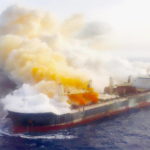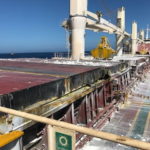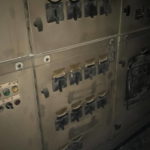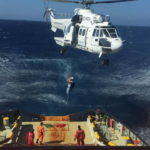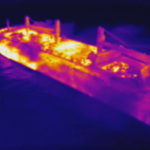Experts from U.S. based Resolve Marine Group were engaged to respond to the bulker fire off Las Palmas with Ammonium Nitrate Based Fertilizer on board
In August of 2017, a 57,000 GT bulker began smoking, 120 nm south of Grand Canary Island. It was carrying[ds_preview] NPK, ammonium nitrate based fertilizer and was on its way to Thailand from Norway. Cargo holds four and five started to warm and had a sudden reaction and violent release of gas from hold four causing the hatch covers to blow open hard enough to damage the overhead crane. The crew was evacuated by the Coast Guard, and Resolve Salvage & Fire was engaged under a Lloyd’s Open Forum (LOF) to respond to the vessel. In the Emergency Response effort Resolve mobilized two firefighting tugs, a marine firefighting team and equipment and highly experienced salvage personnel immediately to the scene. A command center was set up in Grand Canary.
Upon arrival the response team noted that cargo hold 3 was beginning to smoke as well. Due to the unknown nature of how an ammonium nitrate-based cargo would behave and the history of the »Texas Ccity« disaster with a similar cargo, experts were used to assess the danger of the cargo, including marine chemists and marine firefighting teams. It was determined that the cargo would likely not explode, but the gasses were extremely poisonous and would remain low, meaning that maneuvers within proximity of the casualty was extremely dangerous to the tug and salvage crews.
At this time the ship was approximately 100 miles offshore and drifting at a rate of 30 – 50 miles per day in a south west direction away from land.
The first priority was to get a tow line connected to the casualty in order to keep her closer to land and near the support of additional resources. The second priority was to save the cargo in holds one and two. It is the salvors duty to protect life and the environment as well as ship and cargo interests. Helicopter assistance was requested by Resolve to the Spanish Authorities but was refused due to the danger. Resolve mobilized the nearest helicopter but due to the approvals required by the Civil Aviation Authority it would take three days to get the helicopter on site.
Numerous attempts were made over a two-day period to establish a towing connection and board the vessel, but the salvage team was unsuccessful due to the 3 to 5 m swells. Finally, on the third day, a special forces trained salvor was able to attach a grapple to the railing of the casualty and climbed 6 m up the side of the burning ship in a 4 m swell. The salvor was then able to lower a ladder to the other members who then boarded the casualty and establish a tow line to the tug. The casualty was now nearly 300 miles from land. Salvors were wearing protective breathing apparatuses as the fumes could be deadly. 12 hours after the connection was made, cargo hold one began reacting and exhausting poisonous gases at the same spot where the salvage team had previously boarded.
As the vessel approached 100 miles south of Grand Canary, Resolve was notified by the Spanish Authorities that they would not be able to come closer than 50 nautical miles from land. At this time the Spanish Coast Guard was onsite, and in the command center, observing all activities along with multiple other stake holders.
The tug and crew could not enter the cloud of smoke during this process making maneuverability limited and dangerous. At night, the tug had to stay upwind while during the day it could maneuver around certain areas in order to stay in the lee of the Islands, keeping a safe distance from land.
With the burning vessel in tow, the search for a port of refuge began. As crew members were unable to access the vessel, a drone was dispatched with a thermal imaging camera to find the hot spots in each cargo hold and identify the stage that each cargo was at in its reaction.
Firefighting efforts continued and over the next few days and the smoke began to dissipate. At this time the Spanish Authorities allowed the vessel to come into Grand Canary however due to the limited resources and additional difficulties, it was decided to go to the mainland for discharge operations. During this time the salvage team was able to board the vessel and investigate the condition. Once alongside, the salvage crew conducted their final inspections and upon submission of various reports, the vessel was safely redelivered to her owners.
Joseph Farrell III





